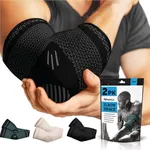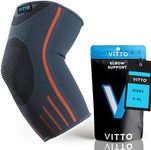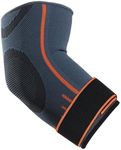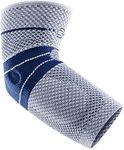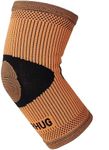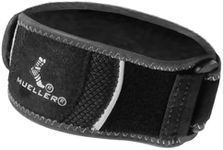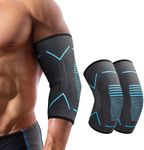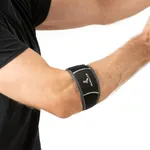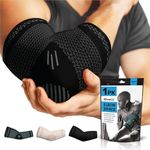Buying Guide for the Best Tennis Elbow Braces
When choosing a tennis elbow brace, it's important to consider the specific needs of your condition and lifestyle. Tennis elbow braces are designed to alleviate pain and provide support to the elbow joint, helping to reduce strain and promote healing. The right brace can make a significant difference in your comfort and recovery process. Consider factors such as the level of support you need, the material of the brace, and how it fits into your daily activities. Understanding the key specifications will help you make an informed decision that best suits your needs.Type of BraceThere are generally two main types of tennis elbow braces: straps and sleeves. Straps are designed to apply targeted pressure to the forearm muscles, which can help alleviate pain by reducing strain on the elbow. Sleeves, on the other hand, provide overall compression and support to the entire elbow area. If you need targeted relief, a strap might be more suitable, whereas a sleeve can be beneficial if you require more comprehensive support. Consider your specific pain points and activities when choosing between these types.
MaterialThe material of a tennis elbow brace can affect both comfort and effectiveness. Common materials include neoprene, nylon, and spandex, each offering different levels of breathability, flexibility, and durability. Neoprene is known for its excellent support and warmth, which can be beneficial for pain relief. Nylon and spandex blends are often more breathable and flexible, making them suitable for active use. Consider your comfort preferences and any potential allergies when selecting a material.
AdjustabilityAdjustability is crucial for ensuring a proper fit and effective support. Many braces come with adjustable straps or Velcro closures that allow you to customize the level of compression and fit. This is important because a brace that is too tight can restrict circulation, while one that is too loose may not provide adequate support. Look for a brace that offers easy adjustability to accommodate changes in swelling or activity level throughout the day.
Size and FitChoosing the correct size is essential for the brace to function properly. Most braces come in various sizes, and some offer a one-size-fits-all option with adjustable features. To find the right size, measure the circumference of your forearm just below the elbow. A well-fitting brace should feel snug but not overly tight, providing support without causing discomfort. Consider trying on different sizes if possible, or refer to sizing charts provided by manufacturers.
Level of SupportThe level of support provided by a tennis elbow brace can vary, with some offering mild support and others providing more rigid stabilization. If you have mild symptoms or are using the brace for preventative measures, a brace with light to moderate support may suffice. For more severe pain or during recovery from an injury, a brace with higher support might be necessary. Assess your pain level and activity demands to determine the appropriate level of support.
Ease of UseEase of use refers to how simple it is to put on and take off the brace, as well as how comfortable it is to wear throughout the day. Some braces are designed for quick application, which can be beneficial if you need to adjust it frequently. Consider how often you will need to wear the brace and in what settings, such as during sports or daily activities, to ensure it fits seamlessly into your routine.

